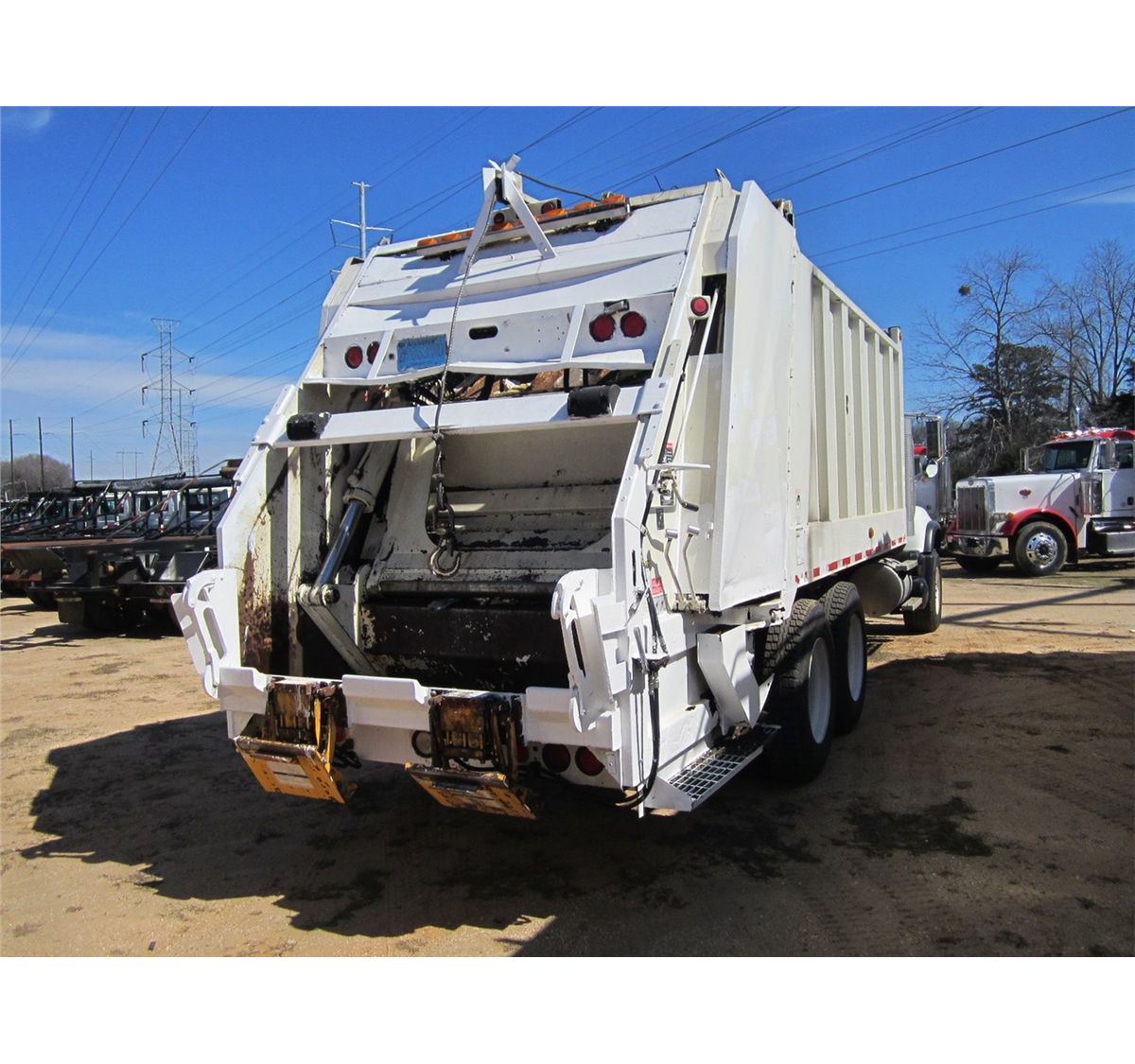
Trucks of the era mostly used two-cylinder engines and had a carrying capacity of 1.5 to 2 t (3,300 to 4,400 lb). The first truck in the United States was built by Autocar in 1899 and was available with 5 or 8 horsepower (4 or 6 kW) engines. Other companies, such as Peugeot, Renault and Büssing, also built their own versions. A year later, in 1896, another internal combustion engine truck was built by Gottlieb Daimler, the Daimler Motor Lastwagen. Later that year some of Benz's trucks were modified to become busses by Netphener. In 1895, Karl Benz designed and built the first internal combustion truck. Internal combustion Daimler Motor-Lastwagen from 1898 Steam-powered wagons were sold in France and the United States until the eve of World War I, and 1935 in the United Kingdom, when a change in road tax rules made them uneconomic against the new diesel lorries. The first semi-trailer appeared in 1881, towed by a steam tractor manufactured by De Dion-Bouton. The roads of the time, built for horse and carriages, limited these vehicles to very short hauls, usually from a factory to the nearest railway station. However, steam wagons were not common until the mid-19th century. Trucks and cars have a common ancestor: the steam-powered fardier Nicolas-Joseph Cugnot built in 1769. History Steam wagons A Sentinel steam wagon In the European Union, vehicles with a gross combination mass of up to 3.5 t (3.4 long tons 3.9 short tons) are known as light commercial vehicles, and those over as large goods vehicles. The market-share of electrically powered trucks is growing rapidly, expected to reach 7% globally by 2027, and electric motive force already predominates among both the largest and smallest trucks. The majority of trucks currently in use are still powered by diesel engines, although small- to medium-size trucks with gasoline engines exist in the US, Canada, and Mexico. In American English, a commercial vehicle without a trailer or other articulation is formally a "straight truck" while one designed specifically to pull a trailer is not a truck but a " tractor". Commercial trucks can be very large and powerful and may be configured to be mounted with specialized equipment, such as in the case of refuse trucks, fire trucks, concrete mixers, and suction excavators.

Smaller varieties may be mechanically similar to some automobiles. Trucks vary greatly in size, power, and configuration, but the vast majority feature body-on-frame construction, with a cabin that is independent of the payload portion of the vehicle. For other uses, see Truck (disambiguation) and Lorry (disambiguation).įreightliner M2 dump truck A Mack Titan road train in Australia Liebherr T 282B hybrid electric mining truck A Mitsubishi Minicab MiEV battery-electric truckĪ truck or lorry is a motor vehicle designed to transport freight, carry specialized payloads, or perform other utilitarian work. “ New York City, and DSNY in particular, is a world leader when it comes to testing the latest technologies to help us reduce our environmental footprint. We’re proud to be the first Mack customer to test this exciting new technology, and we look forward to continuing to work with Mack throughout this project."Trucks" and "Lorry" redirect here. DSNY Deputy Commissioner Rocky DiRico said in a release, DSNY is both the world’s largest sanitation department and one of Mack’s largest customers, making it an “ideal choice” for testing purposes. The Mack LR’s demo model will be used in real-world testing by the New York City Department of Sanitation (DSNY) next year.

Mack LR uses four NMC lithium-ion batteries which charge at up to 150 kW, and the hydraulic systems on the truck are electrically driven, as well. The truck even has a special copper-colored bulldog hood ornament, meant to denote its status as an electric vehicle. Power is sent through a two-speed Mack Powershift transmission. The Mack LR BEV uses Mack’s integrated electric powertrain, featuring two 130 kW motors producing a combined 496 peak horsepower and 4,051 lb.-ft.

Mack Trucks has introduced its Mack LR all-electric refuse truck, which it plans to test on the streets of New York City in 2020.


 0 kommentar(er)
0 kommentar(er)
